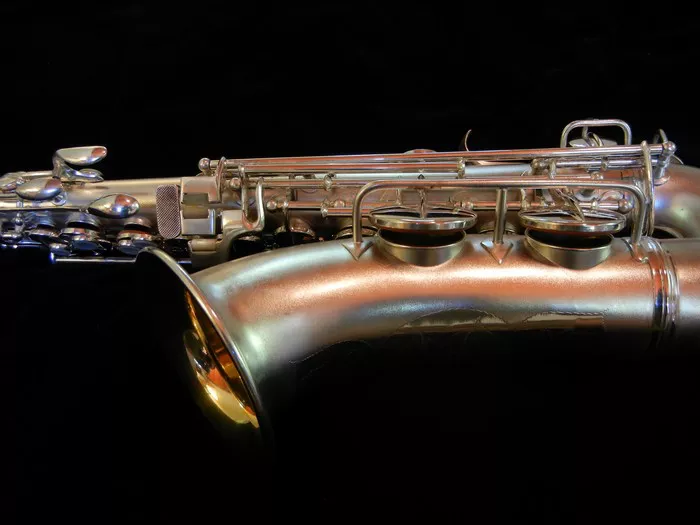The alto saxophone, a captivating and versatile instrument, has long been a staple in the world of jazz, classical, and contemporary music. Central to its playability is the intricate arrangement of buttons or keys that adorn its body. In this article, we will explore the anatomy of the alto saxophone, focusing on the number of buttons and the significance each one holds in the production of its rich and resonant sound.
Understanding the Basics: The Alto Saxophone Configuration
Before delving into the number of buttons, it’s essential to grasp the fundamental structure of the alto saxophone. The alto saxophone belongs to the saxophone family, characterized by its medium size and pitch. This transposing instrument is typically pitched in the key of E♭, making it a crucial component of various musical ensembles.
The alto saxophone features a conical brass body, a curved neck, and a distinctive flared bell. The keys, strategically placed along the body and the neck, are essential for altering the pitch, producing different notes, and executing various musical articulations.
Counting the Buttons: The Alto Saxophone’s Keyboard
The alto saxophone’s keyboard, often referred to as the “button layout” or “key configuration,” plays a pivotal role in a musician’s ability to navigate the instrument. On an alto saxophone, there are 23 buttons, or keys, distributed across its body and neck. Each button corresponds to a specific pitch or function, allowing the saxophonist to produce a wide range of notes and execute various musical techniques.
The buttons are made from materials such as brass, nickel, or other alloys, providing durability and responsiveness to the player’s touch. They are intricately linked to a system of rods, levers, and springs that connect to the saxophone’s pads. When a button is pressed, the corresponding pad covers or uncovers tone holes, altering the airflow and producing different pitches.
The Octave Key: Enhancing Range and Articulation
Among the 23 buttons on the alto saxophone, one key holds particular significance – the octave key. Positioned on the back of the instrument, the octave key allows the player to shift between octaves seamlessly. By engaging the octave key, the saxophonist alters the flow of air through the instrument, extending the range and facilitating the production of higher notes with greater ease.
The octave key is a critical component for achieving the instrument’s full potential, enabling expressive playing across various registers. Its strategic placement and functionality make it an essential tool for saxophonists to navigate the alto saxophone’s expansive tonal spectrum.
Exploring the Range: High F# Key
Beyond the standard 23 buttons, some alto saxophones are equipped with an additional key – the High F# key. This key, when present, provides the musician with an extended range by allowing the production of an F# note above the instrument’s regular range. The inclusion of the High F# key is often a preference among advanced players and is commonly found on professional-grade alto saxophones.
The High F# key enhances the saxophonist’s ability to explore diverse musical genres and tackle compositions that demand a broader range. Its inclusion adds a layer of flexibility to the alto saxophone, making it a desirable feature for those seeking an instrument with enhanced capabilities.
Mechanisms for Articulation: The Palm and Side Keys
In addition to the main array of buttons, the alto saxophone is equipped with palm keys and side keys that contribute to the instrument’s versatility. The palm keys, situated above the main buttons, are manipulated by the player’s fingers, allowing for the production of specific high notes and facilitating rapid articulation.
Side keys, positioned along the sides of the saxophone, are operated by the player’s thumbs and are integral for executing certain trills, alternate fingerings, and facilitating smooth transitions between notes. The combination of main buttons, palm keys, and side keys empowers the saxophonist with a comprehensive set of tools for expressive playing.
See Also: Playing the Saxophone in Tune: Everything You Need To Know
Conclusion: The Alto Saxophone’s Musical Palette
In conclusion, the alto saxophone’s 23 buttons, along with optional keys like the High F# key, form a sophisticated system that empowers musicians to create a diverse and expressive musical palette. The intricate arrangement of buttons, octave keys, palm keys, and side keys allows saxophonists to navigate through various musical genres and explore the instrument’s full range. Understanding the significance of each button unveils the craftsmanship and ingenuity behind the alto saxophone, solidifying its place as a cherished instrument in the world of music. Aspiring saxophonists and enthusiasts alike can appreciate the complexity and beauty of the alto saxophone’s design, recognizing it as a conduit for artistic expression and musical innovation.


